Some months back I wrote an article, Soft-Country Feet?, where I suggested that hoof ailments such as hoof cracks, white-line disease and thrush, common to horses living in soft, wet environments could be reduced or eliminated with regular, biomechanically-sound trimming.
Generally my horses get trimmed every three weeks. However, recently I have been travelling and it has been just on 10 weeks – 3 trim cycles – since my herd of eight were last trimmed. I was prepared for the worst but fortunately it wasnt that bad. All of them had grown really long (none of the working horses were even closte to fitting into their Easyboot Gloves!), a couple had developed some cracks on the dorsal wall, a couple had hoof-wall separation in the quarters, and those usually in work had lost some robustness of the frog. Otherwise they looked pretty good. It was just a case of removing excess length and correcting breakover. Here are some before, after and comparison shots of their near-fore feet:



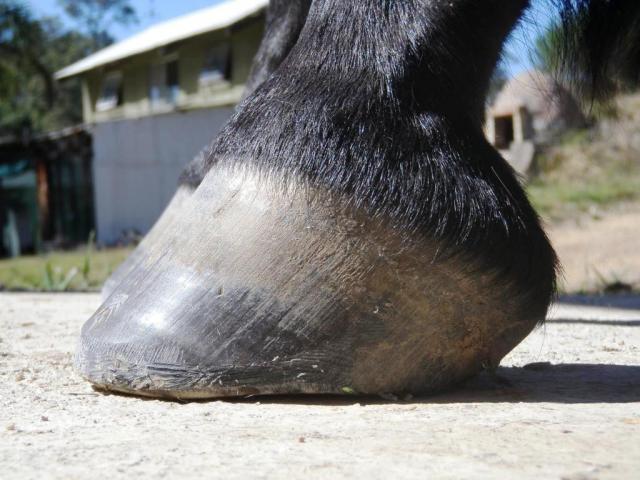

——————————————————————————————

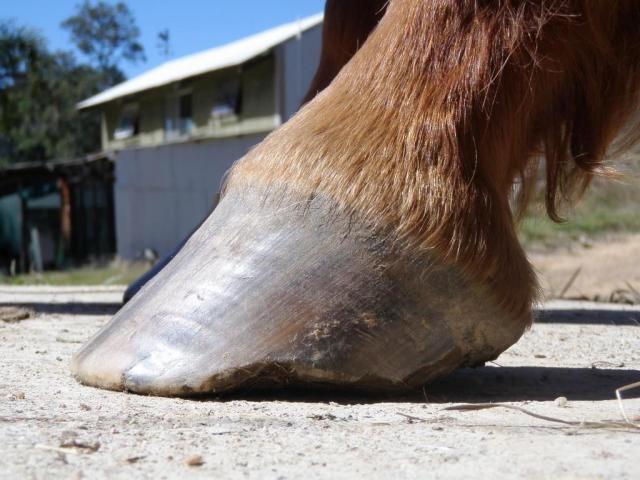
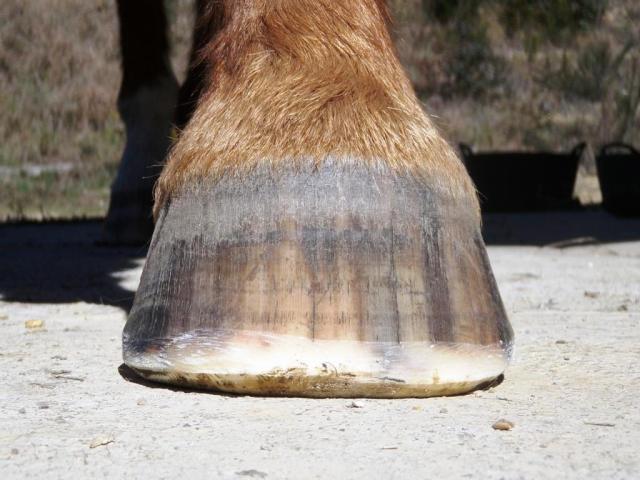
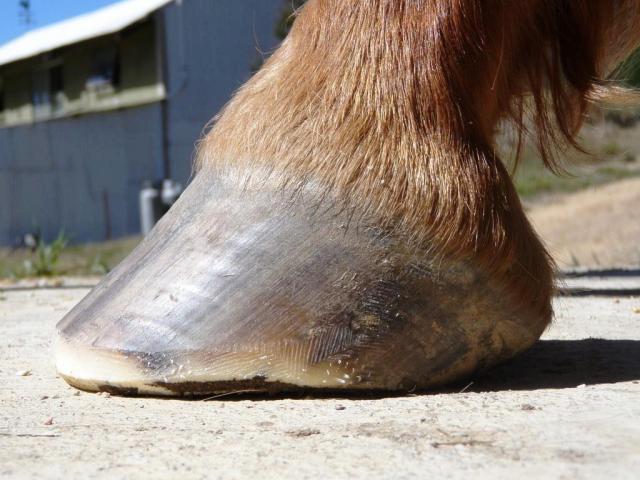
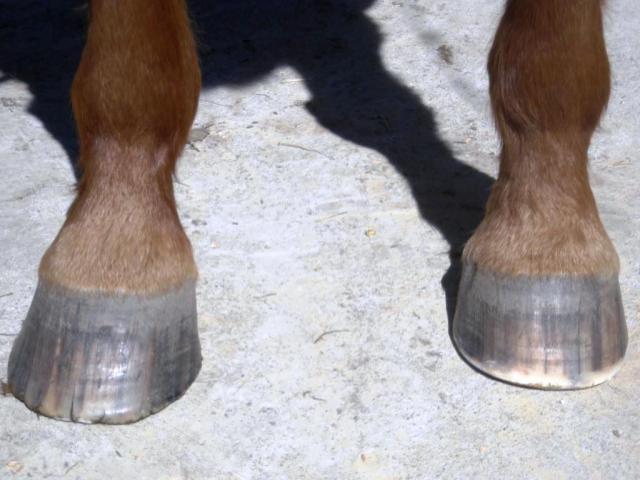
——————————————————————————————

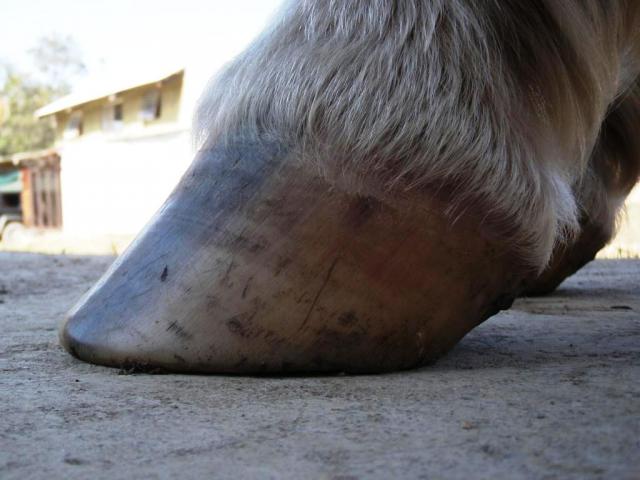
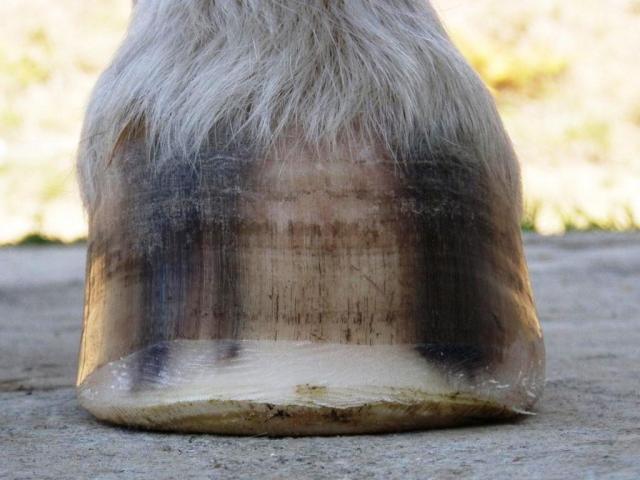
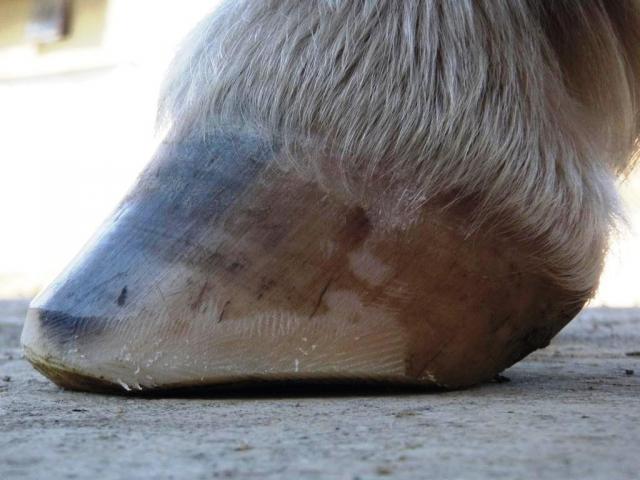
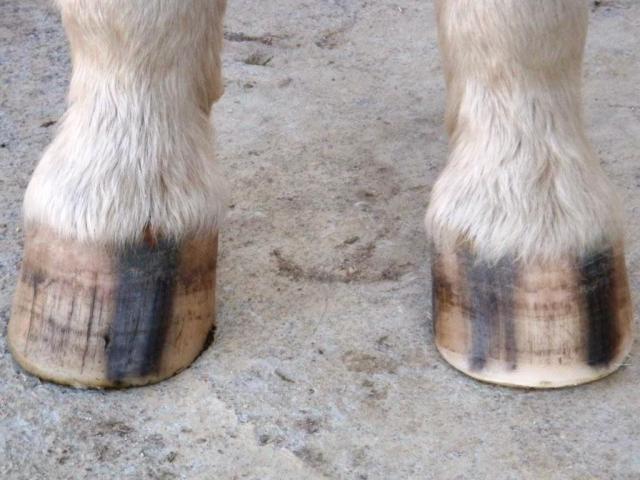
——————————————————————————————
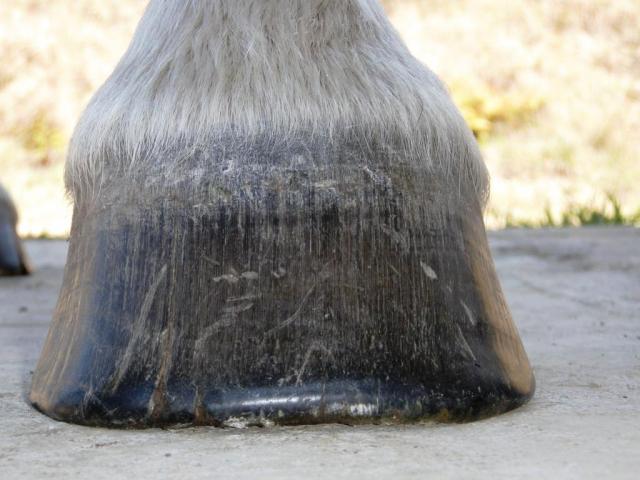
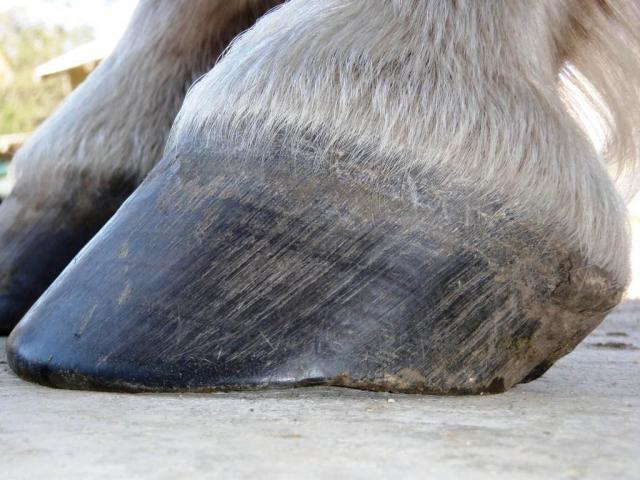
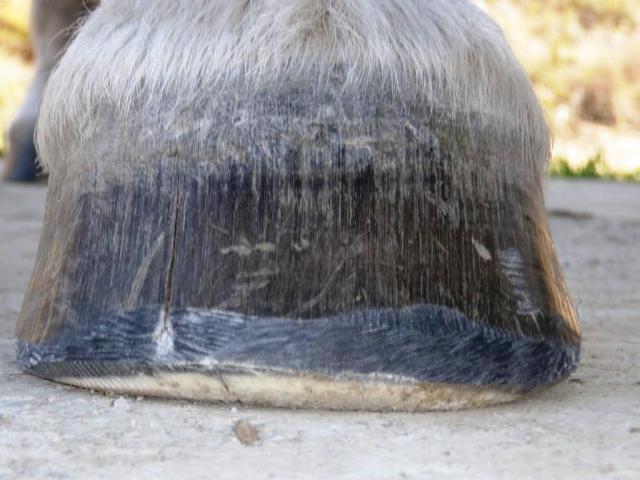
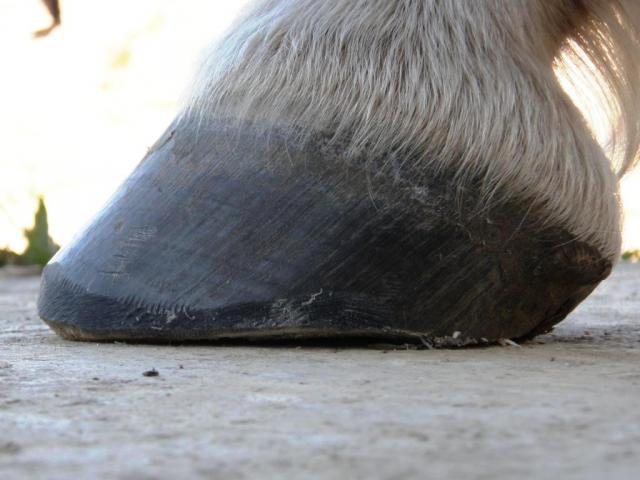
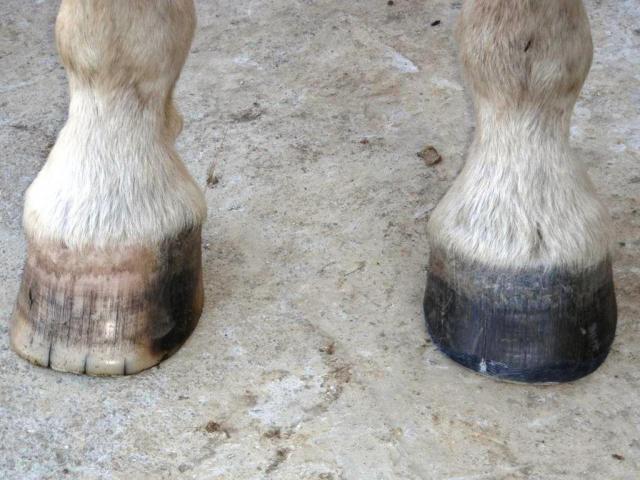
——————————————————————————————
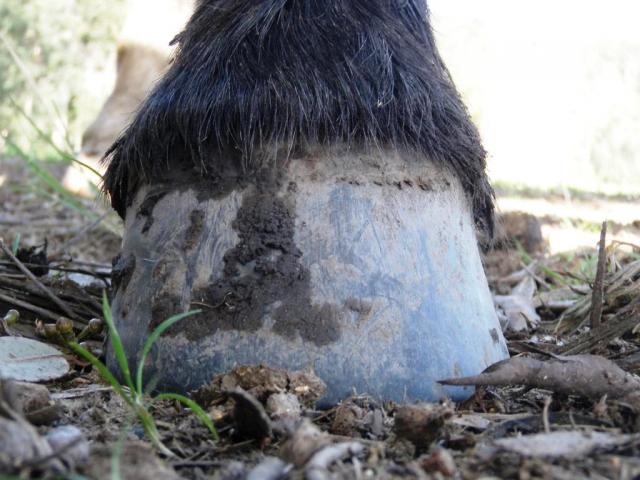
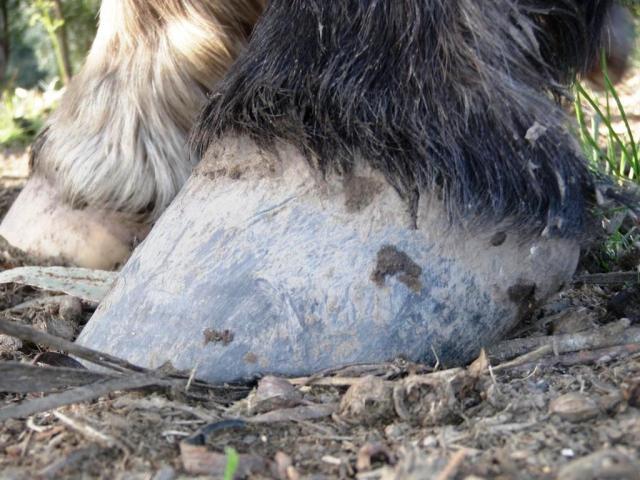
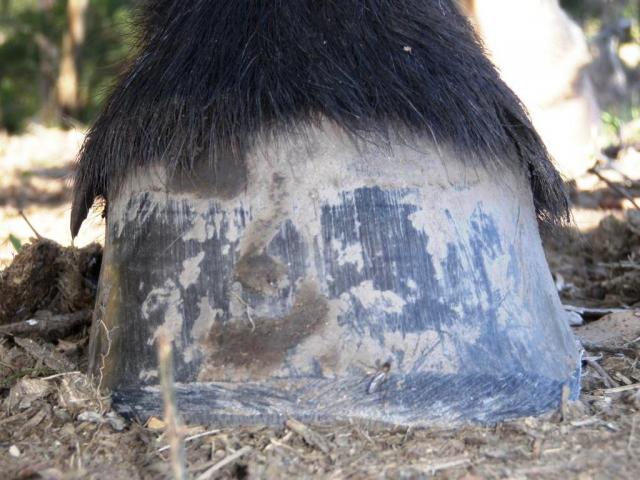
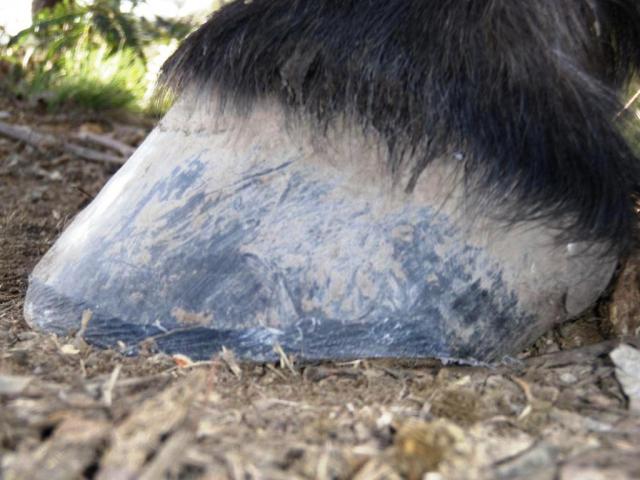
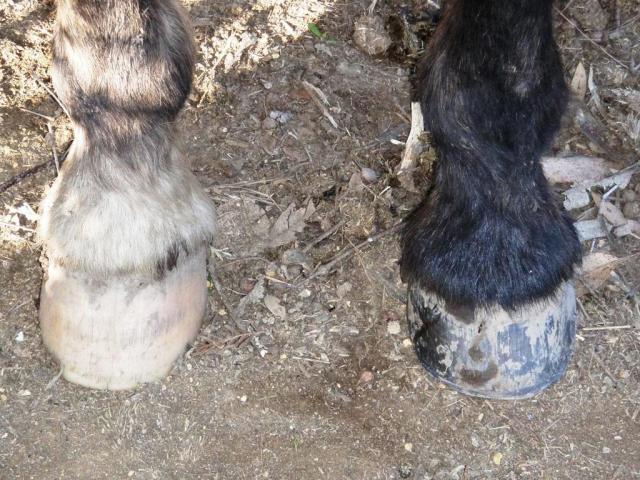
——————————————————————————————
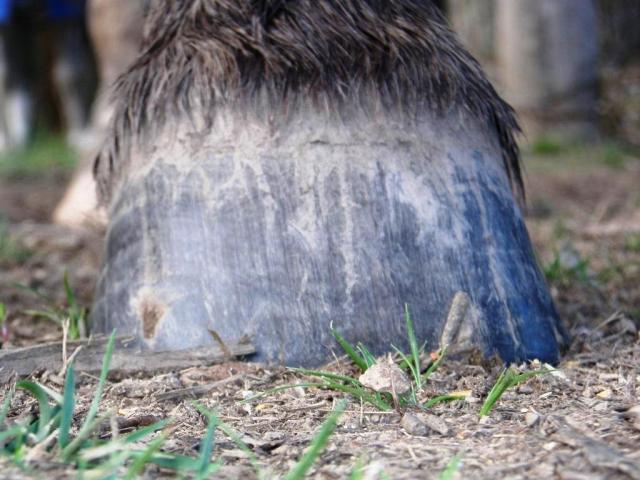
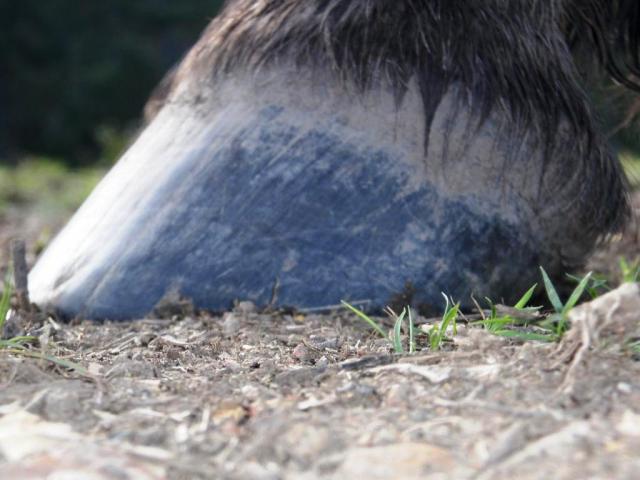

The last two sets of photos are of my two rising three-year olds. As I was by myself, and they are not well halter trained, I just trimmed them at liberty in the paddock. I forgot to take post-trim shots of the filly but still got the comparison shot.
Basically, despite the long interval between trims and the, not unexpected, excessive growth, I could still treat these as basic maintenance trims, achievable by any owner trimmer. For this straightforward kind of work I tend to follow a simple process.
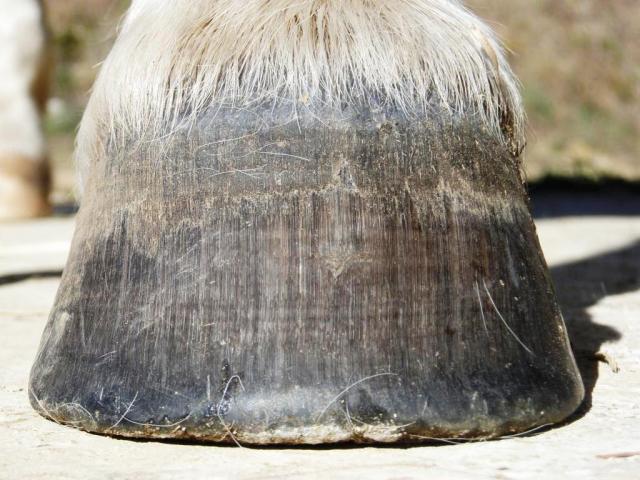
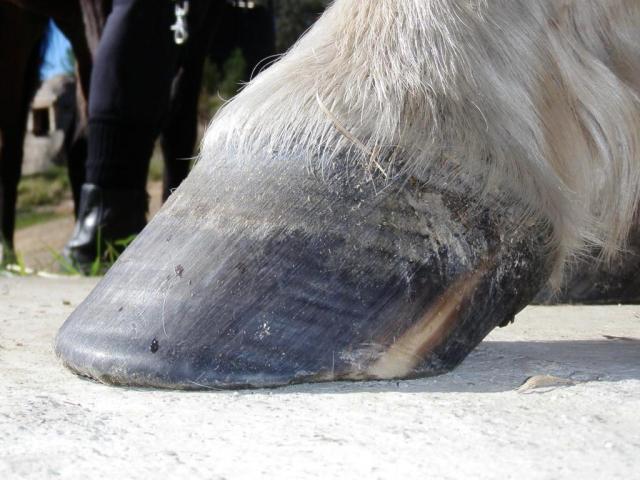
Dorsal and lateral views of untrimmed near-fore hoof.

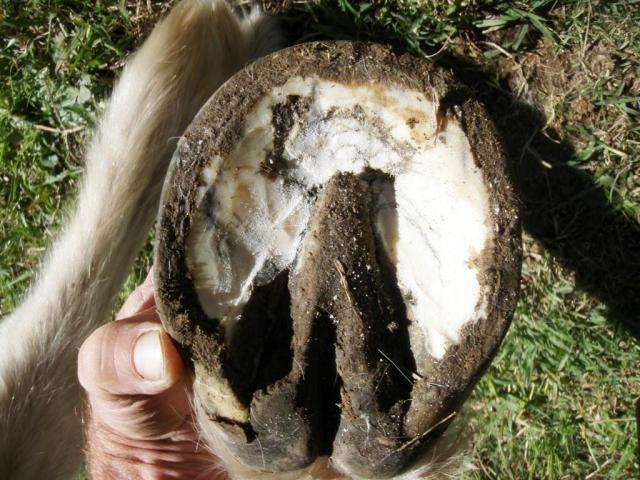
Solar view of near-fore untrimmed and then with excess bar and sole removed.
1. Remove any solar structures (sole, bars) if necessary. On healthy, exercising feet this is not always, in fact very rarely, required. However, bars and all but the outer circumference of the sole should be pasive to the wall when standing on flat, hard ground. So if I know I am going to have to take down the walls a fair amount (as is the case here), then I will remove solar structures now. I very rarely remove frog; only if it is diseased. Frog stimulation and loading is required for the development of the the digital cushion and lateral cartilages necessary for horses undertaking performance work (underlying theory for a performance horse hoof can be found here).
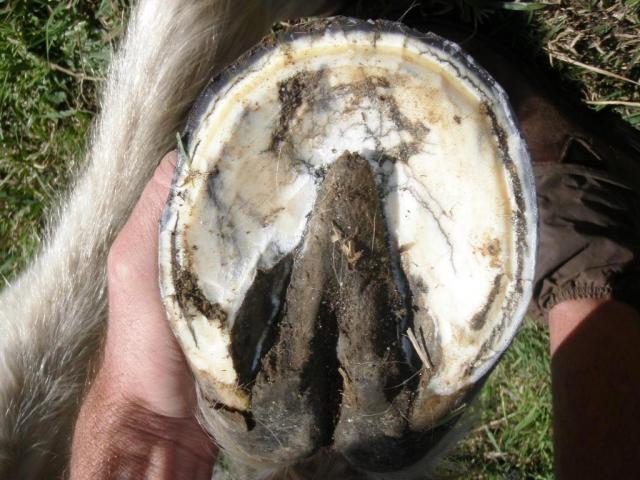

Use nippers to remove excess wall. Use the rasp to establish vertical hoof height at the heels and toe.
2. Establish the vertical height of the hoof. The vertical height is the height of the coronary band above the ground when the horse is standing normally. In domestic horses it is pointless to put some arbitrary measurement on this – rather, use landmarks of the hoof to guide you as to where the coffin bone is positioned in the hoof and trim to optimise coffin bone location. If you are unsure of how to do this, ask your trimmer to show you. For many, if not most, domestic horses, the coffin bone is too low in the hoof capsule and there is little scope to reduce vertical height.
In this example I have used nippers to reduce wall length. Generally this will not be necessary for maintenance trims – a regular 2-3 week maintenance trim will prevent such gross wall growth. I then used the rasp to establish a plane across the heels and toe to set up the vertical height of the hoof.
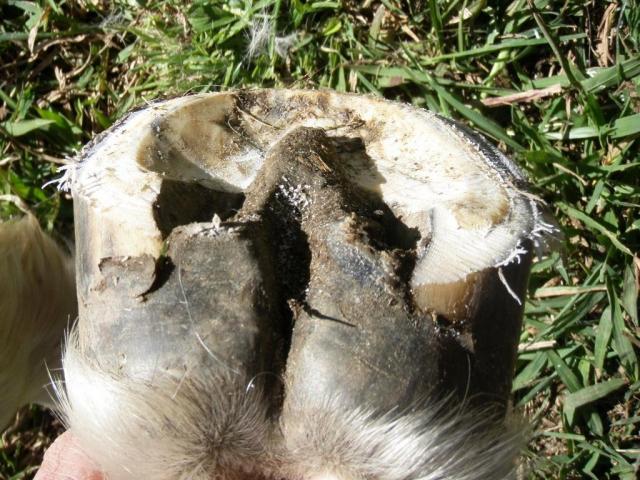
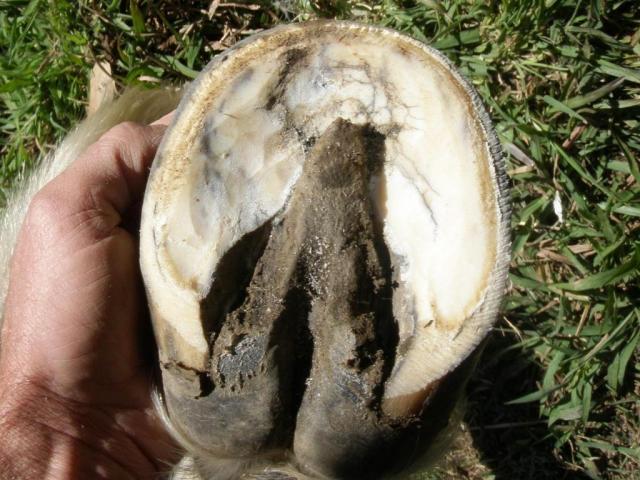
Scoop the quarters to ensure they are passive to the heel and toe. Add a bevel around the hoof.
3. Rasp the quarters until they are passive to the heel and toe. Scooping the quarters enables the heels to more easily expand on weight-bearing. I often see otherwise well trimmed feet lacking quarter scoops. Then apply a bevel around the front half of the hoof. There are a multitiude of approaches to bevelling. I prefer a 45 degree angle around the hoof from 9 to 3. If the toe needs backing up futher, I will apply a steeper bevel so I can go back behind the white line – this is not something that would generally be done in a maintenance trim. I rarely bevel into or behind the quarters unless there is a quarter flare. Finish with a rasp around the distal hoof wall to complete the trim.


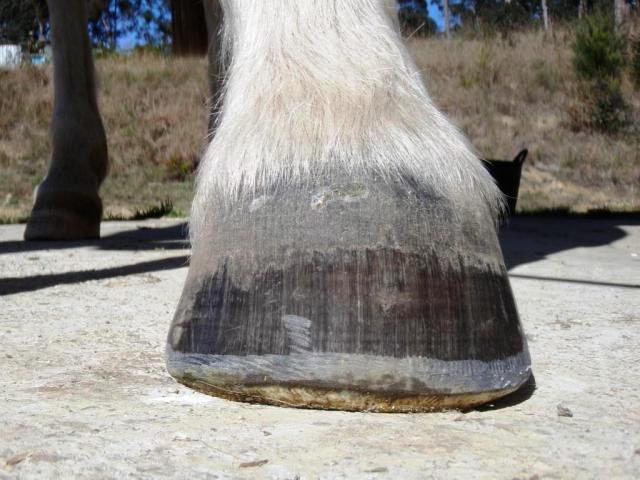
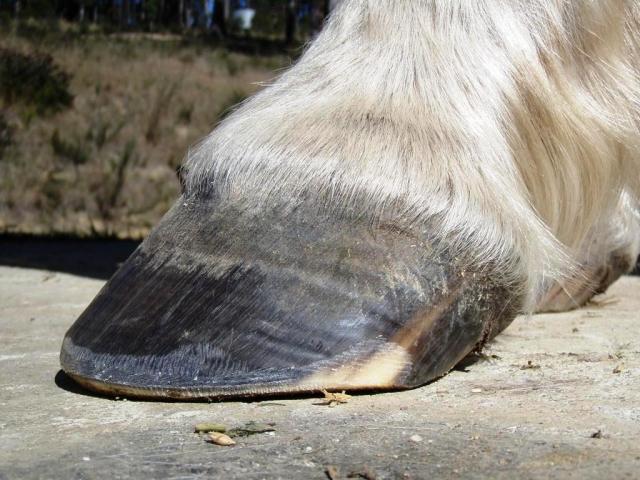
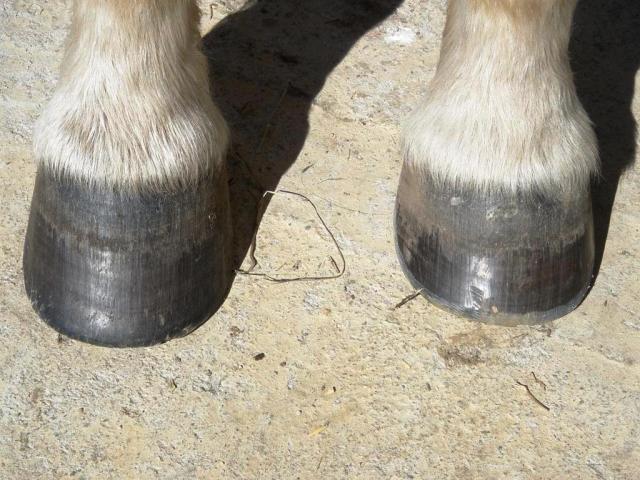
——————————————————————————————
So lets just repeat that process another time to be sure.
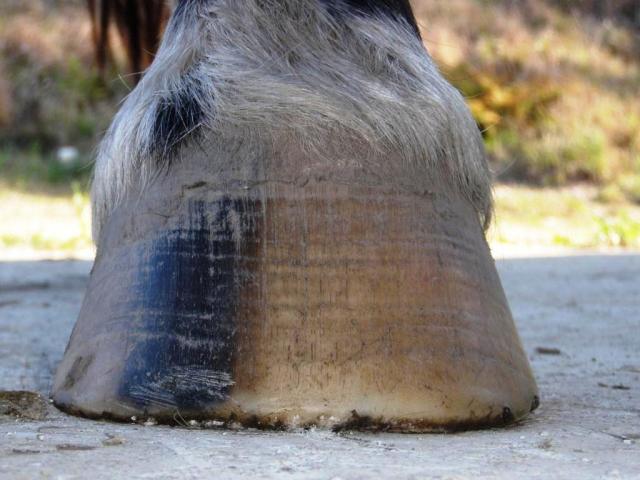
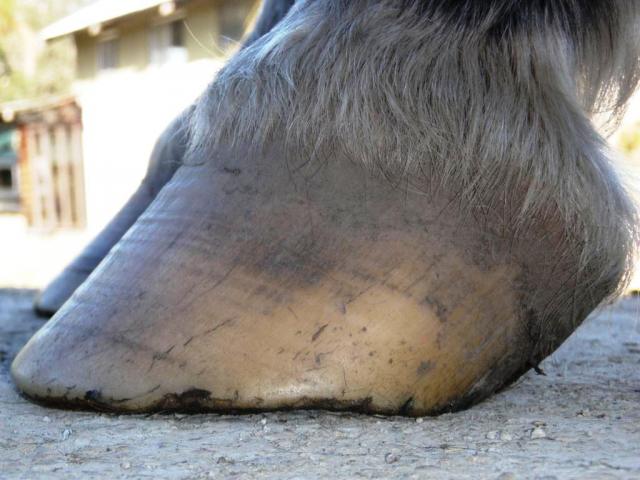
Untrimmed near-fore hoof: dorsal and solar views.
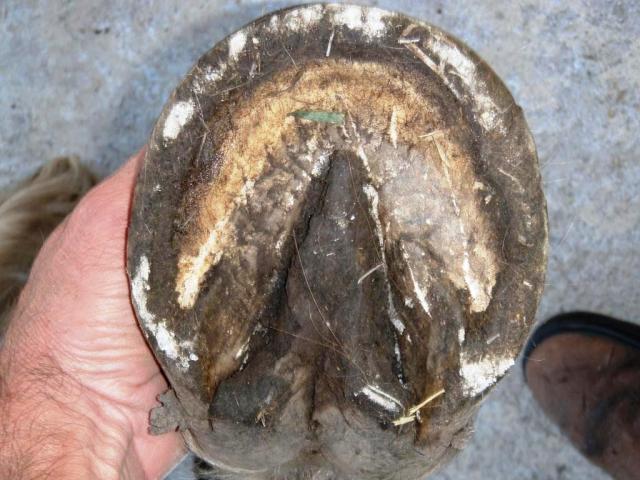
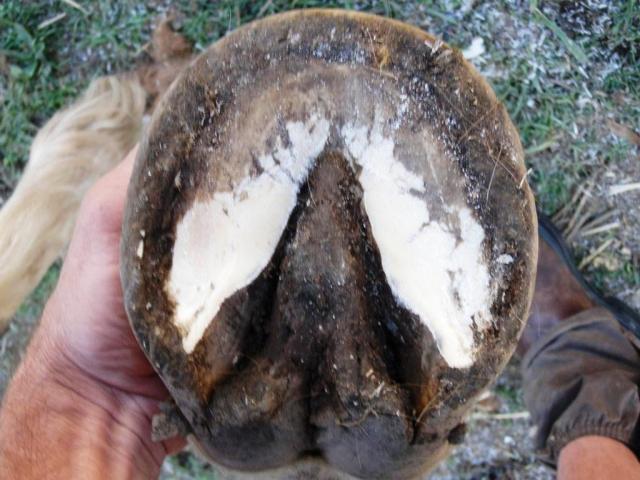
Remove only those solar structures that will not be passive once the excess wall has been removed. Note: the frog and the outer cricumference of sole need not be passive.
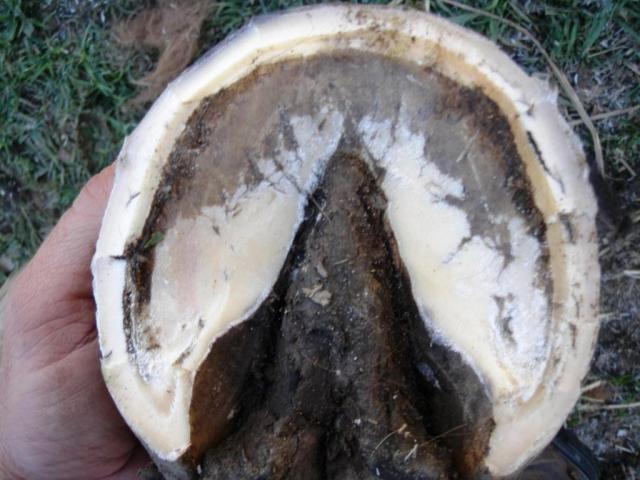
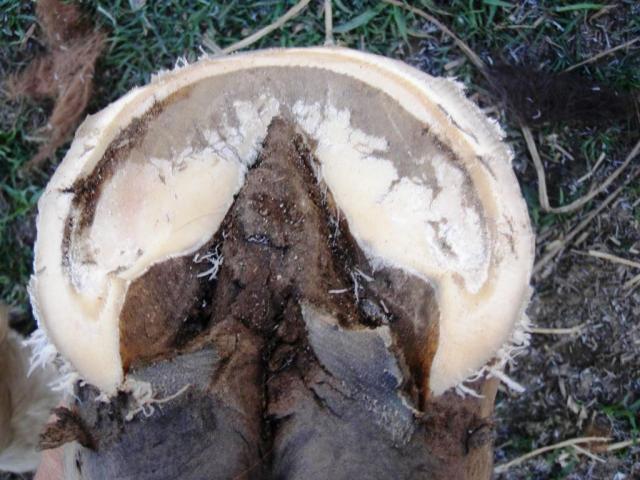
Remove excess wall with nippers: this will rarely be necessary for regular maintenance trims. Use the raps to establish vertical height of hoof by establishing a heel and toe plane.
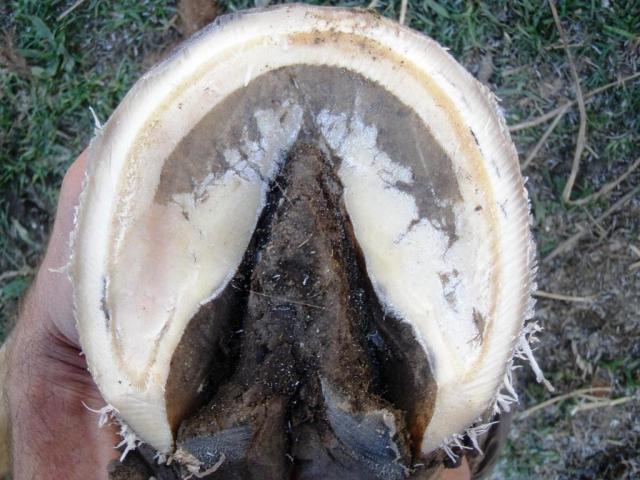
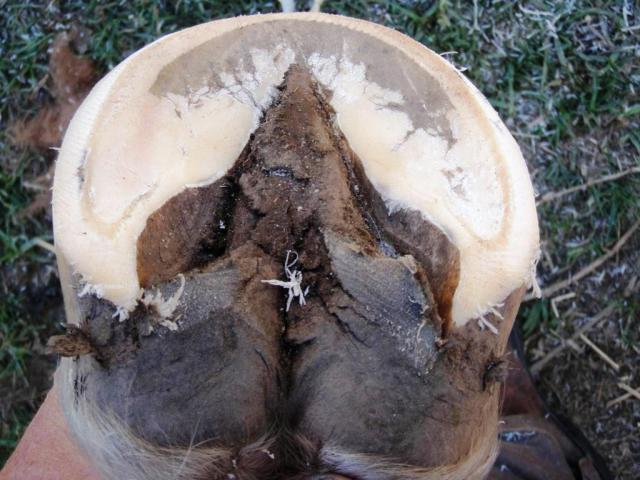
Rasp the quarters scoop to ensure the quarters are slightly passive to the heel and toe. Apply a bevel around the front half of the foot. Generally the outer wall should be passive to the inner wall and outer sole perimeter. When addressing flare, at the toe – as is the case here – or quarters, the whole wall can be passive to the sole. Finish with a rasp around the distal hoof wall to complete the trim.


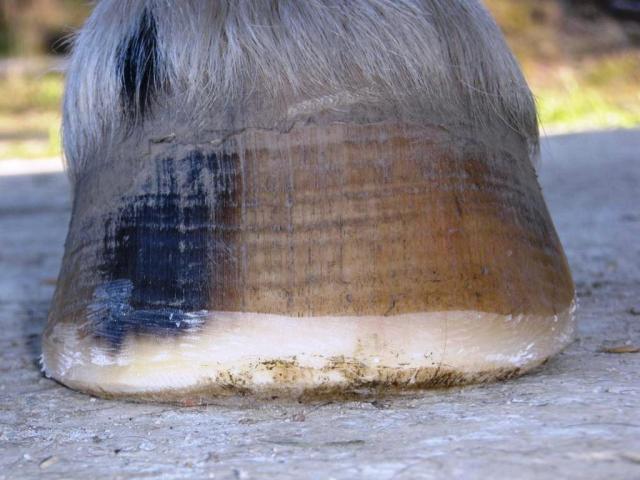
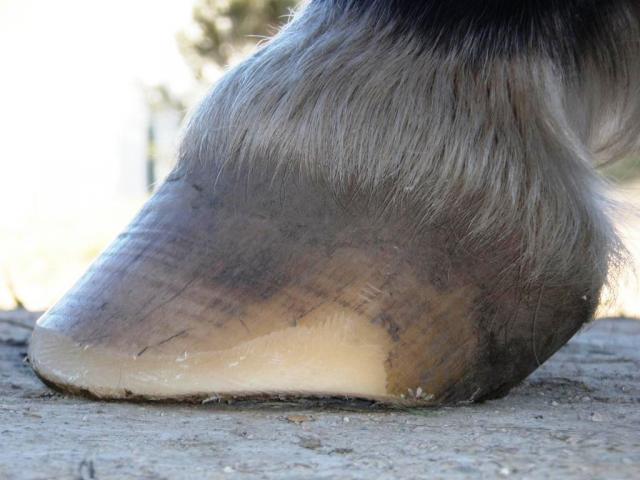
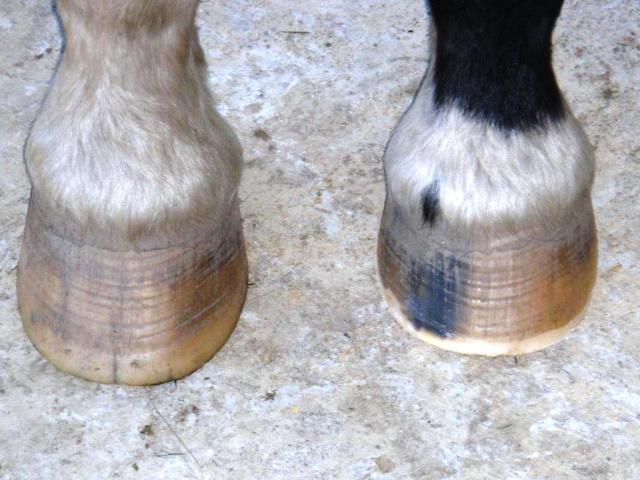
Keep up your regular maintenance trims – your trimmer will love you for it.




